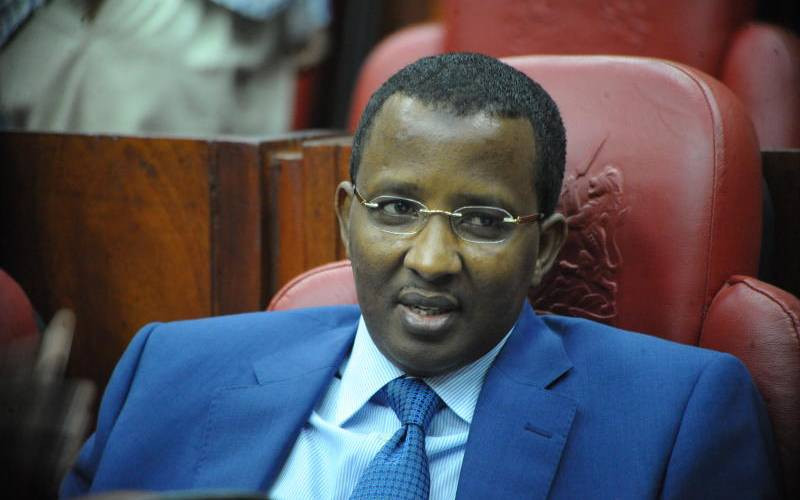The world marks the International Day of Zero Tolerance for Female Genital Mutilation tomorrow.
While we join the rest of the world to mark this day, we do it against a backdrop of emboldened communities speaking out for FGM!
According to UNFPA, 'Millions of girls around the world are still threatened by genital mutilation despite a century of efforts to put an end to it.
In the 29 countries in Africa and the Middle East where the practice is concentrated, more than 125 million girls and women have had been subjected to the rite. It is projected that a further 86 million young girls worldwide are likely to experience some form of cultural practice by 2030, "if current trends continue". Sadly Kenya may just contribute a significant portion of these young girls at risk of FGM if the current trend is anything to go by.
The Kenya Demographic and Health Survey of 2008/9 painted a very gloomy picture of the prevalence of FGM in the country. This survey put the prevalence of FGM among the Somali at 98 per cent followed by Kisii at 96 per cent with Maasai coming in third at 73 per cent. The Embu, Kalenjin, Meru, Kamba and Kikuyu followed in that order with significant percentages of women of reproductive age between 15and 49 reporting FGM.
It is six years since this survey was done and one would want to believe that the prevalence of FGM has gone down. However, the overt opposition to anti-FGM efforts that fly in the face of anti-FGM laws leaves one to wonder where we went wrong with our campaign efforts.
Chiefs and their assistants have been particularly targeted, assaulted and their property destroyed in Kuria for standing up against FGM in that community. In Kajiado, Maasai women and girls have openly demonstrated against the anti-FGM law questioning its origin and arguing that they were never consulted.
In Samburu last December, the council of elders read to the media a community edict asserting their zeal to continue circumcising their girls. This was done in the presence of their elected leaders. One can only guess where their loyalty lies.
In a recent brazen and bear knuckled campaign, a group of Maasai women in Narok lured anti-FGM activists to an area where they claimed FGM was being performed only to turn against them with kicks and blows in a classic example to intimidate them.
Note that in all the given examples, no arrests have been made yet all these acts were in the public domain including national television! This is not to say that arresting and charging women and men opposed to the anti-FGM law is the solution, far from it. It just goes to show how impunity in the country is slowly percolating to the man and woman on the street and the village.
We seem to make laws from a top to bottom approach hoping that they will magically make some otherwise enduring practices to disappear.
Of course there have been arrests in some limited cases. A chief was arraigned before a court in Kajiado for condoning FGM. However, the community, and specifically the women and girls whose interests this law is supposed to serve demonstrated in solidarity with him.
Before you curse and think that this anti-FGM war may be lost, take heart. In the US, surprisingly, FGM was being performed by physicians as late as 1920s ostensibly to cure a myriad of ailments they claimed affected the girl child.
The war against FGM can be won but there is need to re-examine the strategies. We may need to borrow from the HIV and Aids activists who after a long time of messages that had scary images of emaciated, supposedly Aids inflicted people, changed tact. Human beings do not necessarily get scared by scary messages; they just tune out, but will more likely listen to positive messages, hence the birth of positive living messages in the HIV and Aids war that now seem to have made significant impact.
Stay informed. Subscribe to our newsletter
It is therefore imperative that a much deeper analysis to understand where the women and girls who should be applauding the anti-FGM law are coming from. The 2010 constitution has a very progressive bill of rights; similarly, it also seeks to protect our different cultures, and therein lies the dilemma. For instance, women and elders from some communities that perform FGM do not in fact see it as such-mutilation, rather as a rite of passage that confers honour to the girls and women.
Some communities have argued that they were not consulted when the anti-FGM law was passed. Public participation in public policy making is a cardinal pillar of the 2010 Constitution.
Could they be having a point?
How are laws in Kenya mooted and passed? What are the chances that someone in Turbi desert, Kuria or even in a village in Kiambu will know about this or that law being debated and eventually passed in our Parliament?
Should everyone be consulted, how practical could that be? This is not to rule out the importance of consultation and public participation.
Communities that circumcise their girls must be part of the solution and not part of the problem, if this anti-FGM campaign has to succeed.
 The Standard Group Plc is a
multi-media organization with investments in media platforms spanning newspaper
print operations, television, radio broadcasting, digital and online services. The
Standard Group is recognized as a leading multi-media house in Kenya with a key
influence in matters of national and international interest.
The Standard Group Plc is a
multi-media organization with investments in media platforms spanning newspaper
print operations, television, radio broadcasting, digital and online services. The
Standard Group is recognized as a leading multi-media house in Kenya with a key
influence in matters of national and international interest.
 The Standard Group Plc is a
multi-media organization with investments in media platforms spanning newspaper
print operations, television, radio broadcasting, digital and online services. The
Standard Group is recognized as a leading multi-media house in Kenya with a key
influence in matters of national and international interest.
The Standard Group Plc is a
multi-media organization with investments in media platforms spanning newspaper
print operations, television, radio broadcasting, digital and online services. The
Standard Group is recognized as a leading multi-media house in Kenya with a key
influence in matters of national and international interest.







